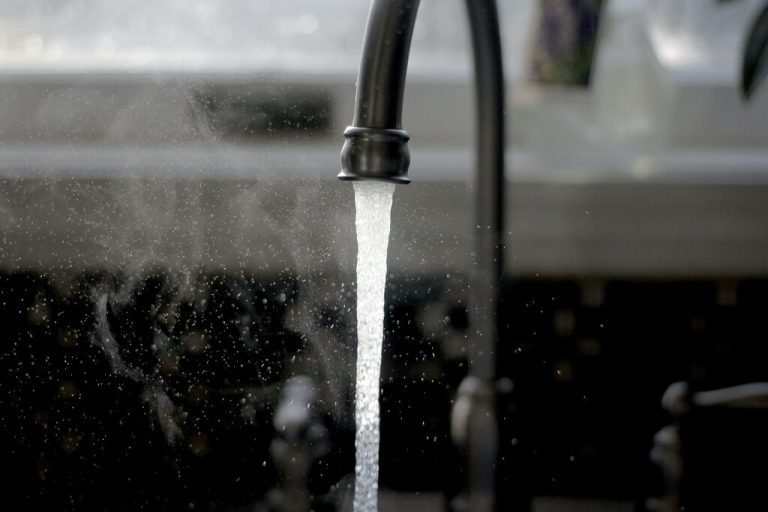Table of Contents [show]
Per and polyfluoroalkyl substances (PFAS) are man-made chemicals used for clothing to furniture since the 1940s. These substances are also used for electronics and food packaging. Industries have used these chemicals due to their repellent properties. Because PFAS were associated with adverse health effects in the early 2000s, they were taken out of production in the United States. Unfortunately, these chemicals were carried throughout the environment and in water supplies. Many of these environmental issues were caused by overseas manufacturing, imported products, and will form a strong bond that can resist degradation. According to the Environmental Working Group, it's estimated that more than 200 million Americans have PFAS in their drinking water. Read on to learn about PFAS, if your water is contaminated, and how you can remove it from your water.
About PFAS
PFAS are man-made chemicals created by a mixture of carbon and fluorine forming one of the strongest bonds in nature. Adding to that, PFAS do not break down, remain stable in water, and stay in the environment along as in human bodies for a very long period of time. These contaminants have been given the nickname “forever chemicals”. The Agency for Toxic Substances and Disease Registry (ATSDR) said it can take up to 4 years for the levels of PFAS in your body to reduce in half.
In the 1940s, PFAS were introduced as repellents in water, oil, grease, stains, and fire. They have been used throughout different industries for many needed products including non-stick cookware, water-resistant clothing, stain-proof fabrics, and the foam used for fighting fires. There are approximately 5,000 forms of PFAS. The most common are perfluorooctanoic acid (PFOA) perfluorooctane sulfonate (PFOS) and studied in the U.S. The manufacturing industry stopped using these chemicals in the early 2000s but due to their ability to live longer and because they are used overseas, PFAS are still present in our environment to date.
The Products Where PFAS Are Found
Due to their versatile properties, PFAS are found in a wide range of products. PFAS are found in many household items including:
- Paint, polish, and wax
- Microwave popcorn bags
- Water-resistant clothing
- Pizza boxes
- Non-stick cookware
- Stain-resistant carpets and furniture
- Cleaning Products
PFAS End Up in Your Drinking Water
When PFAS seeps into soil and groundwater or surface water, PFAS is water-soluble and commonly found in water near facilities that manufacture form for fire fighting in training and also used on military bases, airports, and training centers. PFAS enters water when products containing these chemicals are sent to landfills. Once the products break down, they remain in the soil then seep into nearby water sources.
The Leading Effects from PFAS
The effects on health vary but some of the most common are reproductive, developmental, and immunological issues. Because PFAS does not break down easily, it can build up in the human body over time. The more exposure the greater the chances are for developing negative health effects. The EPA has shown evidence of PFAS exposure in the following:
- Suppressing the immune system
- Thyroid hormone disruption
- An increase in cholesterol levels
- Lowering infant birth weight
- Liver and kidney damage
- Cancer
You Can Remove PFAS from Your Water
You can remove PFAS from your water by using reverse osmosis with activated carbon filtration and ion exchange.
Reverse Osmosis
The Reverse Osmosis system applies pressure to push unfiltered water through the semipermeable membrane. The membrane has small pores that prevent contaminants from getting through including PFAS but allows clean water to flow to the other side. Reverse osmosis is the best water treatment to remove contaminants from your water.
Activated Carbon Filtration
Carbon filters have activated carbon with a great number of pores on the surface and infrastructure. As water runs through the carbon, PFAS and other contaminants are captured by a process called absorption, allowing the water to flow through to the other side.
Can PFAS Be Found in Bottled Water?
PFAS can be found in bottled water as well as canned carbonated water. A study by Consumer Reports tested 47 brands of bottled water and canned carbonated water and found detectable levels of PFAS but only 9 brands had levels over 1 part per trillion (PPT). Out of the 9 brands with levels over 1 PPT, 2 were basic water and 7 were carbonated.
There are several ways to remove PFAS from your drinking water. You need to purchase a good quality water filtration system to make sure you and your family have safe, clean water to prevent any health issues.

